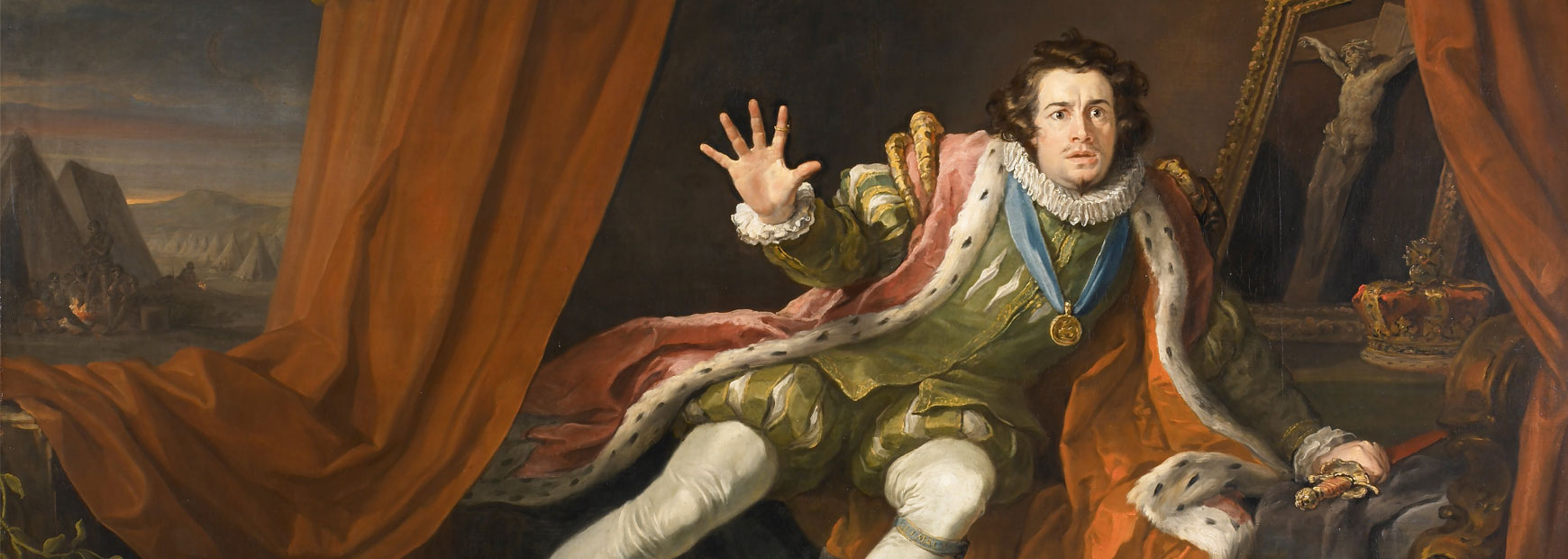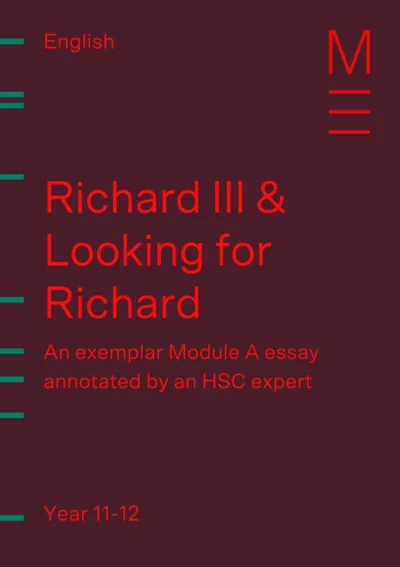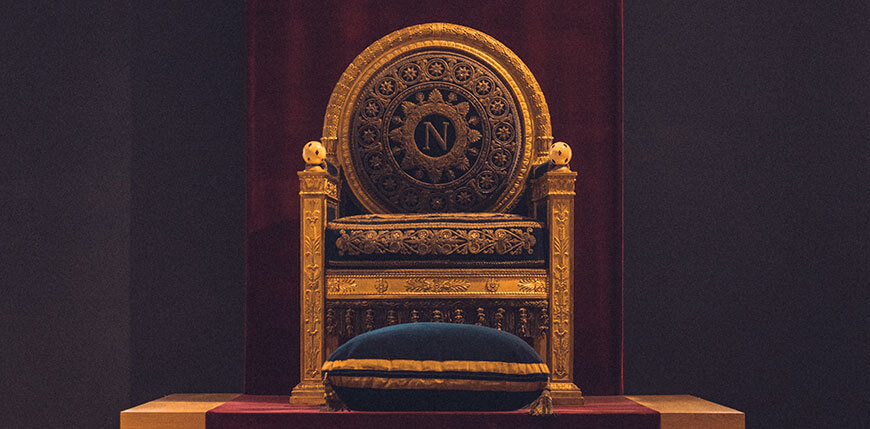Welcome to Matrix Education
To ensure we are showing you the most relevant content, please select your location below.
Select a year to see courses
Learn online or on-campus during the term or school holidays
Learn online or on-campus during the term or school holidays
Learn online or on-campus during the term or school holidays
Learn online or on-campus during the term or school holidays
Learn online or on-campus during the term or school holidays
Learn online or on-campus during the term or school holidays
Learn online or on-campus during the term or school holidays
Get HSC Trial exam ready in just a week
Get HSC exam ready in just a week
Select a year to see available courses
Science guides to help you get ahead
Science guides to help you get ahead
Struggling with Shakespeare’s King Richard III and Pacino’s Looking for Richard? Don’t worry, we’ve got you covered. Read our Dos and Don’ts to ace your responses.

Guide Chapters
Join 75,893 students who already have a head start.
"*" indicates required fields
You might also like
Related courses

Join 8000+ students each term who already have a head start on their school academic journey.
What are the dos and don’ts of studying King Richard III and Looking for Richard for Module A: Textual Conversations? Well, Module A requires you to compare original and re-imagined texts to comment on changes in society and the human condition.
To get a Band 6 result, you need to be able to demonstrate your comprehensive understanding of William Shakespeare’s historical tragedy, King Richard III (1593) and Al Pacino’s docudrama, Looking for Richard (1996).
So, to help you out, in this post, we will give you an essential overview of Shakespeare’s King Richard III and Pacino’s Looking for Richard and their themes. And then we’ll show you how to connect it to the Module requirements with some useful dos and don’ts.

In simple terms, the purpose of Module A is to explore how society’s values and attitudes have shifted in the period between the composition of a pair of texts. You need to explore Shakespeare’s tragedy Richard III and compare it to Al Pacino’s docudrama about producing a partial adaptation Looking for Richard.
Your exploration of these two texts should provide you insights into the contextual values and attitudes of each texts, allowing you to understand how society and, perhaps, humanity, have changed since 1593.
But first, you’ll need some background information about these texts.
Want to see what a Band 6 response looks like?
See a high-scoring HSC essay with notes to guide your own writing! Fill out your details below to get this resource emailed to you. "*" indicates required fields
Download your annotated Module A Richard essay

Download your annotated Module A Richard essay
Before we get into what you should and should not do in your study of Richard III, let’s give you the run-down on it.
The Tragedy of King Richard III to give it its full name is on of Shakespeare’s historical plays. A history is a play based on true historical events. So, to fully understand the play, we must first know its context.
King Richard III begins at the end of Edward IV’s reign, focusing on Richard III’s – the Duke of Gloucester as he’s referred to in the play – attempt to become king.
This means that it is essential that you know the basics of the Wars of the Roses.
The War of the Roses:
It all starts in the 14th century, well before Richard III was born.
When King Edward III died in 1377, there was no clear heir to the throne. Since his eldest son, Edward, had already passed away, it left two options; the King’s other sons or the 10 year old son of Prince Edward (Richard II).
In this case, Richard II had stepped up to the throne, but not for long. He was soon deposed by his cousin, Henry IV, a Lancaster.
King Edward III’s third son’s family were known as the Lancasters, they had red roses as insigninas. His fourth son’s descendants are the Yorks, with a family emblem of white roses.
This is where the Wars of the Roses got its name.
For a century, it became a battle for the crown between the two families, also known as the Wars of the Roses. And this is where Edward IV and Richard III comes in.
To get a more detailed explanation of the Wars of the Roses, watch this video.
Religion
Another important point to note is that England, during this period, was a highly religious and pre-deterministic state.
The English largely believed in fate and assumed that people’s lives were already planned out by God. There was no acceptance of free will or ambition, so, anyone who challenged God’s plan could expect to suffer his retribution.
England is relatively stable under King Edward IV’s reign…. until he begins to get ill.
As he approaches death, Richard III, the Duke of Gloucester, sees this as an opportunity to take the throne. And to do this he must wipe out any possible heirs.
Richard is manipulative, power hungry and very, very intelligent.
He seduces the grieving Lady Ann – still mourning the husband who Richard had murdered – at her father-in-law’s, Henry VI’s, funeral. This gains him social and political status and marks him as a diabolical figure.
Richard then frames his brother, Clarence, and sends him to the Tower of London, where he is killed. This wipes out a possible heir.
Edward dies. And Richard III is claimed as the Lord Protector of England.
This means that is he is now ‘king’ until Edward’s sons become of age. Lord Buckingham helps Richard campaign for the throne however… a threat still exists; the young princes! So, Richard III sends the two princes into the tower where they are murdered.
Hastings is also killed. And Buckingham, suspicious of Richard’s actions, confronts him, leading to his execution.
The people begin to lose trust in Richard III. Chaos ensues!
The ghosts of Richard’s victims return to haunt him, foreshadowing his downfall. Richmond enters England and declares a war.
At Bosworth, Richmond and Richard’s armies fight. Richard is slain, and Richmond comes victorious, becoming King Henry VII.
The play concludes with the end of the Wars of the Roses.

We have a dedicated Module A: Richard III and Looking for Richard course to help you sharpen your English swords and win your battles (exams). Learn more about our English Term Course now
Learn how to write Band 6 HSC responses
Expert HSC teachers, detailed feedback, and comprehensive resources. Learn with Matrix+ onlineEnglish courses.
Now we’ve given you a sketch of Richard III we need to look at it’s contemporary reimagining, Looking for Richard. Fortunately, the context for for Pacino’s film is much easier to get a handle on.
Looking for Richard was made in 1996, the post-Cold War era, where individualism was a rising ideology. This meant that an individual’s self-worth is determined by their goals and achievements as opposed to being pre-determined by God. With this, came the ‘American Dream’; a growing ideal where equal opportunities are provided to all Americans to achieve their highest goals and aspirations.
In addition, in the context of 1990s there was an increased understanding of the human psyche compared to the Elizabethan era.
As opposed to categorising people as ‘good’ or ‘evil’, society now recognises the numerous factors that influences an individual’s behaviour. This means that there is a deeper psychological understanding of desire, guilt, inner conflicts and other human experiences that the Elizabethan era categorised as God’s or the Devil’s doing.
Al Pacino is the director, producer and actor of this historical docudrama. The film documents the process of creating his project; making King Richard III more accessible to the 20th century American audience.
Pacino’s docudrama consists of discussing the original play and its history, as well as debates about changes to the original script to make it more suitable for the 20th century audience. There is an intertwining of storytelling, stage directions, rehearsals, and even interviews of scholars, random people on the street, and critics.
This film attempts to offer a deeper, intimate understanding of the director’s choices to perform and adapt Shakespeare’s King Richard III, actors’ opinions on these changes, and the contemporary reception of the general public to Shakespeare’s work.
Pacino’s aim is to create a greater appreciation of Shakespeare’s work.

You must make note of the genre and form of the two texts, and identify the purpose of these creative choices. This is very important when comparing texts to search for enduring or changed values or to investigate the human condition.
This is outlined in the NESA Module A rubric:
Let’s connect these to Shakespeare’s King Richard III and Pacino’s Looking for Richard:
King Richard III is a historical play. However, this does not mean that it is 100% accurate. Since Queen Elizabeth was in power during this time, Shakespeare wrote the play to support her reign as opposed to Richard’s. he wanted to stay in her good books.
At the time playwrights and writers needed to be careful of the censors. This means that it is biased towards the Lancasters and, to that end, many elements have been exaggerated or changed.
Furthermore, Richard III is also a tragedy. Tragedies depict the downfall of the protagonist caused by their hamartia – their inherent flaw (often hubris, jealousy, or greed).
As tragedies are bloody affairs, this often results in the protagonist’s death and/or the death of others.
In King Richard III, Richard’s main flaw is his unbridled ambition for power. This vaulting ambition leads him to do some rather unsavoury and diabolical things!.
King Richard III is an interesting play to analyse because it’s form has noticable differences from Shakespeare’s other plays. You should note these differences because they help Shakespeare get his messages across to the audience.
For example, Shakespeare’s plays usually pen with characters speaking of the protagonist or a chorus introducing the play. But never the protagonist themselves.
Take Romeo and Juliet. It begins with a chorus outlining the events that occur in the tragedy. “Two households, both alike in dignity, In fair Verona, where we lay our scene!”
However, King Richard III begins with Richard’s famous soliloquy…“Now is the winter of our discontent”
But why?
This change in form is significant because Shakespeare is emphasising Richard’s flaw; his unbridled ambition that challenges God’s will. Here, Richard symbolically strives to take control over his own life from the opening lines of the text. He usurps the narratorial conventions of a text, challenging the playwright who, in a sense, represents God. And as Richard seizes this opportunity, he casts himself clearly and distinctly as a Machiavellian figure ‘determined to play the villain” (Act 1, Scene 1.30).
Changing the form allows Shakespeare to foreshadow Richard’s downfall and characterise him distinctly.
This is just one example of how form can serve a purpose!
Looking for Richard is a docudrama. This means that is filmed in a documentary style everything is staged.
So, why exactly did Pacino choose a docudrama instead of the usual drama adaptation?
Obviously, the genre of this film is deliberately chosen because it serves Pacino’s purpose. Documentaries are usually viewed as “factual”. So, by creating a docudrama, Pacino comments the “truth” of society and humanity – existence of political machinations, innate human desires and the human psychology. We see that the genre of this film is a metaphor for his message.
Also, this form allows for a deeper exploration of Shakespeare’s historical drama as numerous perspectives can be explored. There are scenes from Pacino, the actors, scholars and random people on street giving their opinions on the play.
This docudrama consists of casting choices, on-street and academic interviews, vox populi (street interviews), dress rehearsals, screen-readings and film production. Each of these directorial choices serves a different purpose.
For example, the vox populi gathers the consensus that the 20th century American audience does not care about Shakespeare, whereas the discussions occurring during the screen reading show an in-depth analysis of the changes made to the original script.
• Do: explore the different aspects of a docudrama; interviews, Richard production, rehearsals…
• Do: explain why changes to the original form have been made and how it aids Pacino’s purpose. Think about enduring and changing societal values, understanding of the human psyche over time etc.
• Don’t: ignore the various aspects of the docudrama form• Don’t: forget to discuss film techniques. You are analysing a film, so it is important that you also explore the techniques that are specific to film.

To better understand how to approach the Richard’s, let’s examine the key phrases in the NESA rubric:
In this module, students explore the ways in which the comparative study of texts can reveal resonances and dissonances between and within texts. Students consider the ways that a reimagining or reframing of an aspect of a text might mirror, align or collide with the details of another text. In their textual studies, they also explore common or disparate issues, values, assumptions or perspectives and how these are depicted. By comparing two texts students understand how composers (authors, poets, playwrights, directors, designers and so on) are influenced by other texts, contexts and values, and how this shapes meaning. As students engage with the texts they consider how their understanding, appreciation and enjoyment of both texts has been enhanced through the comparative study and how the personal, social, cultural and historical contextual knowledge that they bring to the texts influences their perspectives and shapes their own compositions.
Okay, that’s a lot of text and it isn’t very clear. So, let’s unpack the main concepts for you so know what you really need to do:
1. In this module, students explore the ways in which the comparative study of texts can reveal resonances and dissonances between and within texts. Students consider the ways that a reimagining or reframing of an aspect of a text might mirror, align or collide with the details of another text.
You need to compare both texts to identify the similarities and differences between them.
How to do that? Think about Pacino’s decision to keep or change details from the original. What do you think: does it confirm, challenge or extend Shakespeare’s message?
2. In their textual studies, they also explore common or disparate issues, values, assumptions or perspectives and how these are depicted. By comparing two texts students understand how composers (authors, poets, playwrights, directors, designers and so on) are influenced by other texts, contexts and values, and how this shapes meaning.
You need to understand that texts are a reflection of the context that they are created. Meaning that the way the text is composed ultimately conveys a message to the audience.
So, through your comparative study, you must link the text’s similarities and differences to societal issues, values, assumptions and/or perspectives over time.
You want to see how things have changed.
3. As students engage with the texts they consider how their understanding, appreciation and enjoyment of both texts has been enhanced through the comparative study and how the personal, social, cultural and historical contextual knowledge that they bring to the texts influences their perspectives and shapes their own compositions.
How you read and interpret a text is ultimately influenced by your perspectives that is influenced by YOUR context. This includes personal lives, social environment, culture and your personal and wider history.
Eg, someone from the 1600’s would view Richard’s downfall as God’s retribution, because they live in a society that is highly religious and has a limited understand of human psychology.
However, someone from the 21st century would recognise that it is a result of his inner conflict and guilty conscience, because modern society is secular and has a better understanding of the human psyche.
To get the comprehensive rundown on Module A and its rubric, read our Year 12 English Study Guide article: Module A: Textual Conversations.

Good essays and responses start with good notes.
A good idea is to structure your notes in a table that has a direct comparison between the two texts. Sort your analysis based on the values of the texts – kind of like themes. Make sure you include evidence to support your ideas. Comment on the context, this will help you draw connections between the text and the time period.
Remember the three most important aspects of this module are the THREE C’S:
To get you started here is a table for investigating the value of integrity:
| Table: Notes for Richard II and Looking for RIchard | |||
| Where | Shakespeare | Pacino | Comment on context |
| OPENING SOLILOQUY | From the outset Richard challenges the status quo (God, philosophy, belief of the time…) Metaphor / Contrasting Imagery between peace and conflict“ Richard: “Now is the winter of our discontent / Made glorious summer by this son of York”
| Midshot Kimball’s description / Midshot “about a sick king, and everybody manoeuvring around”
| The 20th century is a time where individualism is on the rise and the American Dream is what people desire. So, when Pacino highlights that ‘everybody [is] manoeuvring around’, the audience becomes more sympathetic about Richard’s actions because they understand that the desire for power is a result of the 20th century ideals. On the other hand, Shakespeare’s context is very religious, so they condone anyone who challenges God’s will. As such, the Shakespearean audience will harbour more hatred for Richard because he isn’t happy with the position God has given him.
|
| Women – Lady Anne | Stichomythia Anne: I’ll rest betide the chamber where thou liest
| Chiaroscuro Side Lighting / Tilted Camera Angles / Close-up to Pacino’s ‘in love face’ / confident body language Intercut with Richard’s gloating & laughing Quick cuts to casting search for ‘young women’
| In the post-Cold War era, modern society begins to value ambition and confidence in oneself. As such, Pacino’s representation of Richard as a confident man allows the modern audience to be more sympathetic of Richard because he is a product of his society. However, Shakespeare’s representation of Richard’s confidence characterises him as a Vice character (a typical villain) because his confidence and pride openly challenges God’s authority.
|
| Rhetorical Question / Soliloquy AFTER seduction R: Was women in this humour ever woo’d / was women in this humour ever won?
| Rhetorical Question / Soliloquy BEFORE seduction / Tilted Camera Angles / Close up / Chiaroscuro Light / Speaks DIRECTLY into Camera Richard : Was women in this humour ever woo’d / was women in this humour ever won?
| ||
In Part 2, we explain how to analyse Richard III and Looking for Richard.
Written by Matrix English Team
The Matrix English Team are tutors and teachers with a passion for English and a dedication to seeing Matrix Students achieving their academic goals.© Matrix Education and www.matrix.edu.au, 2025. Unauthorised use and/or duplication of this material without express and written permission from this site’s author and/or owner is strictly prohibited. Excerpts and links may be used, provided that full and clear credit is given to Matrix Education and www.matrix.edu.au with appropriate and specific direction to the original content.